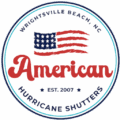Understanding Hurricane Shutter Ratings and Codes (An Expert’s Guide)
When you shop for hurricane shutters, you’ll see terms like “hurricane-rated,” “code-approved,” or “impact-rated.” These aren’t just marketing buzzwords; they are official designations that signify a product has passed a series of grueling tests to prove it can perform its life-saving function. But what do these ratings actually mean? And what are the tests that a shutter must survive to earn them?
As a company dedicated to the science of storm protection, American Hurricane Shutters believes in empowering homeowners with knowledge. This guide will demystify the technical jargon of hurricane ratings and codes, giving you the confidence to know you’re choosing a product that is genuinely protective.
The Foundation: The Miami-Dade County Protocols
After the immense devastation of Hurricane Andrew in 1992, engineers in Miami-Dade County, Florida, developed the most stringent set of product testing standards in the world. These protocols, known as Testing Application Standards (TAS), became the global gold standard for hurricane protection. While the Carolinas have their own building codes, these are largely based on the principles established by the TAS protocols. A shutter that can pass these tests can be trusted anywhere and (in the case of all of our rated shutters) also pass the ASTM 1886E, 1996E, and e330 tests- so they adhere to the IBC Codes, which are looked at in a broader way as the North Carolina and South Carolina hurricane codes.
The Three Critical Tests: TAS 201, 202, and 203
To be certified, a shutter system must pass a trio of demanding tests, in order.
TAS 201: The Large Missile Impact Test
This is the most famous and most critical test. It is designed to simulate the impact of heavy, wind-borne debris during a major hurricane.
- The Test: A 9-pound 2×4 lumber stud, approximately 8 feet long, is fired from an air cannon at the shutter at a speed of 50 feet per second (about 34 miles per hour). The shutter is impacted in several specified locations.
- The Pass/Fail Criteria: To pass, the shutter must not be perforated. That is, the 2×4 cannot create a hole or opening in the shutter. The window behind the shutter must also remain intact and unbreached. A dent or a scratch on the shutter is acceptable; a hole is an instant failure.
TAS 203: The Cyclic Wind Pressure Test
After being battered in the impact test, the very same shutter is then subjected to the cyclic wind test. This simulates the violent, repeated pushing and pulling forces of hurricane gusts.
- The Test: The shutter is mounted to a test wall. A machine then applies thousands of cycles of intense positive (pushing) and negative (pulling) air pressure to the shutter. The pressure levels are extreme, designed to simulate a Category 4 or 5 hurricane.
- The Pass/Fail Criteria: To pass, the shutter must remain structurally sound and attached to the wall. It cannot deform permanently or have any of its components or anchors fail. It must prove it can hold together even after being weakened by impacts.
TAS 202: The Uniform Static Air Pressure Test
This is a test of the overall structural integrity of the system, separate from the cyclic test. It applies a steady, immense load of air pressure (both positive and negative) to the shutter for a set period to test its breaking point. It must be able to withstand a pressure load that is 1.5 times the design pressure it’s rated for without failing.
What This Means for Your Safety
When you purchase a “hurricane-rated” shutter from American Hurricane Shutters, you are purchasing a product that has a documented history of surviving these brutal tests. It means you can have confidence that your **ASSA/Bertha HV** or **Alutech** system is not just a visual deterrent; it is a piece of engineered safety equipment, proven to protect the envelope of your building.
This is why a professional **installation** is so critical. The lab tests are performed on shutters that are installed exactly to the manufacturer’s specifications. Our in-house, expert crews replicate these exact installation standards on your home, ensuring that your shutters will perform as they did in the lab.
Don’t Settle for Anything Less Than “Proven”
In a hurricane, you don’t want to “hope” your shutters will work. You want to “know” they will. Certified, rated protection is the only way to have that confidence. Our commitment to you is to provide only products that have passed these tests, installed by professionals who understand their importance.
Have more **questions** about hurricane ratings? We’re here to help. Call American Hurricane Shutters today at (910) 256-1288 or email the owner, Matthew Burns, at [email protected] for a free, educational consultation.
